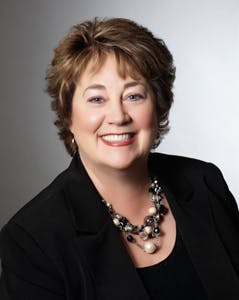We are still in the first quarter of the New Year, and it is not too late to set up a budget for your practice to help guide the spending for the rest of the year.
Dental practice turnarounds begin with a business analysis
Get your 2013 profit and loss statement from your accountant or print your own from your QuickBooks ledger. Take the totals of each of the categories, and make a list of the expenses categories that may see an increase this year. Examples are —
• Wages – Team wages can be the single largest expense category a dentist has, so it makes sense to do some careful planning. Go online to check out salary review sites that have regional salary surveys for health-care fields such as dentistry. (Some have a small fee to access their information.) Or ask your accountant about regional salary surveys. This information can give you a feel for where your team members wages fall and can help steer you toward a reasonable percent increase to budget for (if any). At this early stage of budgeting, it’s smart to aim to give a pay increase to your team — and it should be based on individual merit and not be an across-the-board percent pay raise for everyone. As you work through the budget plan and get to the bottom line, you may have to come back to the drawing board and decrease or even eliminate a wage increase, but always start out trying to make it feasible to give merit pay raises in order to keep your good performers motivated.
• Lab fees – Ask your labs if they are planning a fee increase for 2014 so you can adequately budget for it. Our clients have their labs cooperating and sharing that information, and the labs know it is just for expense planning purposes. Take last year’s amount spent on lab fees and add that percent increase for your 2014 estimated lab expense.
• Dental supplies – Do the same thing you did with your labs and ask your supply reps what percent increases the supply companies are planning on for this year. Add that percentage on to your 2013 total and plan for any additional increases, such as adding an associate, or outfitting and using an additional treatment room.
• Equipment – It never hurts to at least budget for new or replacement equipment just in case something breaks down. Do you need more computers for your team, or maybe you want to outfit every treatment room with iPads for your patient use. Perhaps 2014 is the year you move forward with some advanced technology such as CAD/CAM, digital radiography, intraoral cameras, or digital photography, for example.
• Marketing/promotion – Every dental practice should be budgeting between 4% and 6% of annual collections to effectively market their practice. The percent is determined by the developmental stage of your practice, the competition in your area, if you added a new associate dentist, if you need a website or need to refresh your current one, if you are getting into social media, if you added dental services to your mix such as sedation dentistry or sleep apnea, and so forth. In these times, you have to market your practice just to maintain the status quo.
• Business insurance – Ask your insurance broker for premium increases for any business insurance you have, and budget for the higher fees.
• Postage – The USPS increased the cost of first class stamps effective 2/1/14 so don’t forget to account for that and add on to your 2013 total postage. If you plan any additional mailings to patients, say, for marketing purposes, be sure to add that in.
• Balloon payments – Are there any loans you have that may have a larger balloon payment due in 2014? Review your loan documents, talk to your lenders, and don’t be caught off guard by a balloon payment.
• Taxes – Ask your accountant at the start of 2014 to work with you throughout the year and not just in December so you can stay on top of income taxes. If your practice has a banner year this year with boosted production and more collections, make sure you don’t get hit with a huge tax bill all at once at the end of your fiscal year.
-------------------------------------------------------------
RELATED ARTICLES:
The 11 commandments of risk management for the dental professional, Part II
What we can learn from McDonald's and other wildly successful companies -- Part 1
--------------------------------------------------------------
Examine any additional expense categories on your Quickbooks ledger for other potential increases. Add in a percentage to your annualized total collections for the percent you will increase your fees in the New Year.
Add in any anticipated production increases if you plan to add another provider (dentist or hygienist), if new treatment services will be added, or you plan for some percent increase to production for refining your systems and operating more effectively.
Plan for any production decreases that will reduce collections such as a doctor’s extended vacation or leave that may keep the doctor from producing dentistry. Decrease collections in the months affected in the budget plan. If the practice will drop any insurance plan participation in the coming year, anticipate some loss of production/collections.
Once all these steps have been completed, add up the totals on a P&L worksheet and review the results. You will see:
a) If these collections are achievable
b) If there are adequate monies left after all projected practice expenses for fair total compensation, including funding retirement for the doctor owner(s)
c) If there is any practice profit left after the doctor-owners are compensated
If any of these points cannot be achieved, you must go back to the drawing board to do another budget draft and carve out some expenses or plan for realistic higher collections. This is worth the several hours this budget planning process will take to reduce your anxiety throughout the year, as you will know where your money is going and you will have more control over how your hard earned dollars are spent.
Kathleen O’Donnell, MA, is Vice President of Coaching Services at Jameson Management, an international management, marketing, and hygiene coaching firm. O’Donnell has worked in the dental industry for more than 20 years specializing in executive coaching, team building, and all aspects of practice management, particularly collections, insurance, scheduling, and communication skills. O’Donnell is a Certified Executive Coach and is a member of the Academy of Dental Management Consultants. Kathleen may be reached at 877-369-5558, [email protected] or at www.jamesonmanagement.com.








